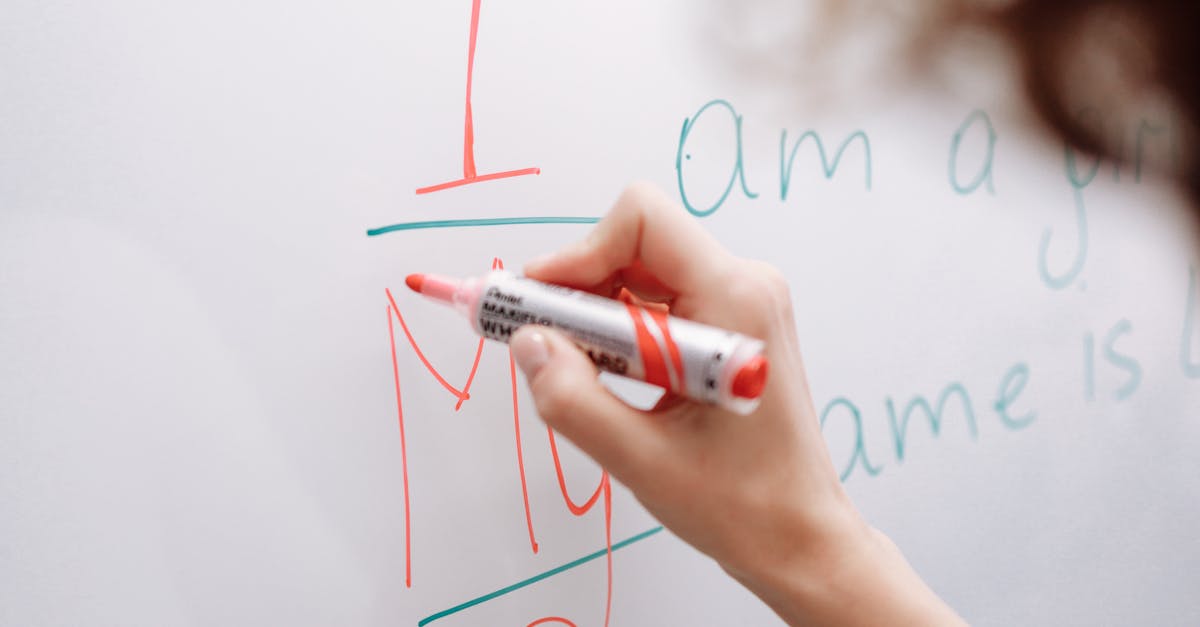
What to Do When Team Collaboration Breaks Down
Facilitating Team Building Activities
Engaging team members in activities designed to strengthen relationships can significantly enhance collaboration. Group exercises can take various forms, from casual outings to structured workshops. The aim is to foster trust and understanding among participants. Icebreaker games, problem-solving tasks, and skill-sharing sessions allow individuals to connect beyond their professional roles.
Creating an inclusive environment is vital for the success of these activities. Encouraging input from all team members ensures everyone feels valued and heard. Setting clear objectives for each session can help maintain focus and purpose. Reflecting on the outcomes afterwards can provide insights into its effectiveness and highlight areas for improvement in future initiatives.
Ideas for Strengthening Relationships
Building strong relationships within a team requires intentional efforts focused on shared experiences. Organising regular team-building events can help create bonds among team members. Activities such as workshops, retreats or informal gatherings encourage interaction outside of the usual work context. These interactions foster a sense of belonging and improve communication, which can significantly enhance collaboration.
Another effective way to strengthen relationships is through mentorship programmes. Pairing less experienced team members with seasoned professionals promotes knowledge sharing and improves team cohesion. Regular check-ins and feedback sessions can also provide opportunities for team members to express their thoughts and concerns. This open line of communication lays the foundation for trust and understanding, essential elements in a collaborative environment.
Implementing Conflict Resolution Strategies
Effective conflict resolution strategies help restore harmony in teams facing disagreements. Encouraging open dialogue allows team members to express their feelings and viewpoints safely. Active listening plays a crucial role in this process, ensuring everyone feels acknowledged. A neutral facilitator can guide discussions, keeping conversations respectful and productive. Solutions should be collaboratively developed, promoting a sense of ownership among all parties involved.
Conflict can often stem from misunderstandings or differing values. Addressing these root causes is essential to prevent future issues. Establishing clear communication channels reduces ambiguity in expectations and responsibilities. Regular check-ins create an atmosphere of transparency where team members feel empowered to voice concerns before they escalate. Emphasising collaboration fosters a positive work environment, helping to strengthen relationships within the team.
Steps to Navigate Disagreements
Disagreements can often arise due to differing opinions and perspectives within a team. A useful approach involves encouraging open dialogue where team members feel safe to express their thoughts. Establishing ground rules for discussions can help maintain a respectful atmosphere. Listening actively and acknowledging each person's viewpoint allows for a more constructive conversation, enabling the team to understand the root causes of the conflict.
Once the issue has been identified, it is crucial to work collaboratively towards a solution. Rather than assigning blame, focus on finding common ground. Encourage team members to brainstorm potential compromises or alternative solutions together. This technique not only promotes unity but also empowers individuals by involving them in the resolution process. When team members feel included, they are more likely to buy into the final decision, fostering a sense of shared responsibility.
Seeking External Guidance
In some situations, internal efforts to mend a fractured team may prove insufficient. Seeking guidance from external sources can provide a fresh perspective and introduce new strategies tailored to the team's unique dynamics. Professionals with expertise in team dynamics or organisational psychology can assess the situation objectively, offering insights that might elude those deeply entrenched in the team's day-to-day operations.
Engaging with external consultants or facilitators can also encourage open dialogue among team members. These individuals can create a safe space for team members to voice concerns, fostering an environment conducive to healing and collaboration. Their impartiality often helps bridge communication gaps while setting the stage for productive discussions.
When to Consider Professional Help
Teams sometimes encounter deep-rooted issues that internal efforts cannot resolve effectively. In such cases, seeking assistance from a qualified professional can provide the necessary guidance to navigate complex dynamics. External facilitators bring fresh perspectives and tailored strategies that can help identify underlying problems and foster a more collaborative environment. Their objective viewpoint can often cut through the emotional barriers that may be hindering communication among team members.
Recognising the signs that your team requires outside intervention is crucial. Persistent conflicts that disrupt productivity, a lack of engagement, or a pervasive atmosphere of mistrust may indicate that it is time to bring in an expert. Early intervention can mitigate further deterioration within the team and encourage healthier interactions amongst members. Investing in professional help can ultimately lead to a more cohesive and effective team structure, paving the way for improved collaboration.
FAQS
What are some effective team building activities to improve collaboration?
Effective team building activities include icebreaker games, team retreats, problem-solving challenges, and social outings. These activities encourage communication, trust, and camaraderie among team members.
How can I strengthen relationships within my team?
Strengthening relationships within your team can be achieved through regular one-on-one check-ins, fostering an open communication environment, celebrating achievements, and encouraging team members to share personal interests.
What are the key steps to resolve conflicts within a team?
The key steps to resolve conflicts within a team include identifying the issue, facilitating open discussion, encouraging active listening, exploring potential solutions, and agreeing on a way forward that satisfies all parties involved.
When should we seek external guidance for team issues?
External guidance should be considered when internal conflict resolution efforts fail, when team dynamics become toxic, or when professional mediation can provide an objective perspective and effective solutions.
How can professional help improve team collaboration?
Professional help, such as consulting with a team coach or mediator, can improve collaboration by providing tailored strategies, facilitating difficult conversations, and offering tools for effective communication and conflict resolution.
Related Links
Why Team Collaboration is Crucial for Project SuccessHow to Foster Effective Team Collaboration in Project Management
Roundup of Best Practices for Team Collaboration
Review of Tools That Enhance Team Collaboration in Project Management
7 Strategies for Improving Team Collaboration in APM